Yellow violets: descriptions of varieties and rules of care
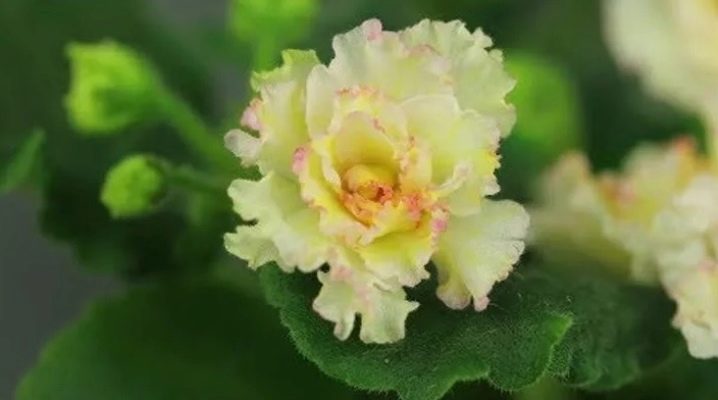
Indoor violet is widespread and very popular with flower lovers. The interest in her is due to the beautiful flowering and many varieties. We often see these amazing flowers on the window: lilac, purple, blue and red. Many varieties have been registered. Among them, the yellow violet, bred by the efforts of breeders, stands out. Color saturation depends on growing conditions. In this article, you will find a description of the most popular varieties of this plant and learn how to care for them.
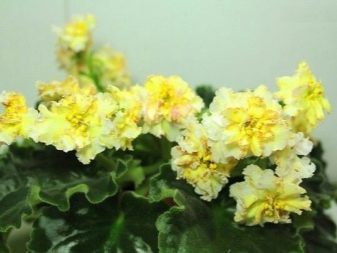

Description
For the first time, the violet was found in Africa, on the territory of eastern Tanzania in the Uzambara mountains by the French baron Saint-Paul. Therefore, the uzambara violet and saintpaulia are the names of the same flower. In some countries it is called African. On the basis of natural violets, various species have been bred, which are called hybrid saintpaulias. Of all the names of this plant, violet is more familiar to us.
Yellow violet is an indoor plant, perennial and evergreen. The stem is shortened, the leaves are covered with villi with a cordate base and a pointed or rounded top. A violet calyx consists of 5 petals and sepals. The fruit is a small box with seeds. The size of the Saintpaulia rosette ranges from 20 to 40 cm in diameter.
But there are large ones with a diameter of up to 60 cm and small ones up to 15 cm and even 6 cm.
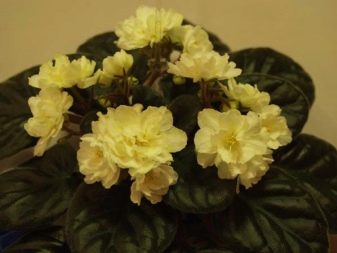
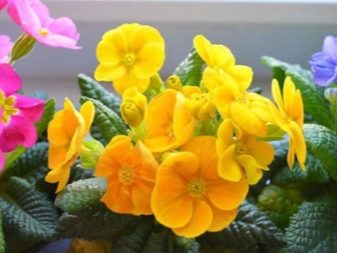
Natural violets have a small range of colors: bluish, blue, burgundy. There are no yellow violets in nature due to the lack of a gene responsible for this color. But if a violet has its signs: light yellow spots, rays or strokes on the petals, then it is already called yellow or yellow-flowered. The yellow pigment does not appear immediately in violets. Initially, the color appears light lemon, pale yellow or creamy. Only in adult plants does it become brighter.
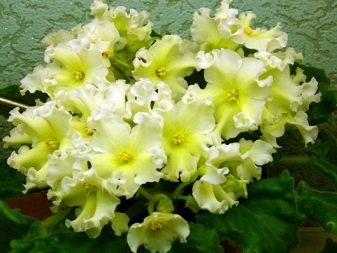
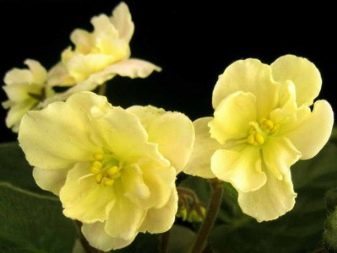
Features of the view
The root system of this species is poorly developed in length. Therefore, she does her work for a short time. As the plant grows, the roots are renewed: old ones are replaced by new ones. As a result, violets should be planted in small pots that restrict the roots and allow maximum air access to the flower. The drainage layer and the presence of holes in the pot also contribute to this.
The variety of varieties of violets is astounding. In appearance, they are different: with a border around the edges and without, in the shape of a star, corrugated or simple. By leaves, they are divided into female and male types.
The male type has the same green leaves, while the female type has a light spot on the upper side of the leaf.

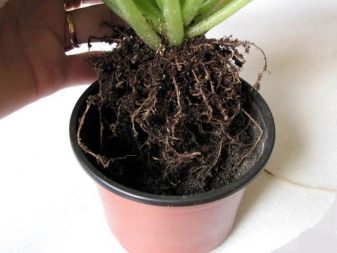
Types and varieties
Mellow yellow
A very interesting variety. Small fluffy flowers with bright yellow rays. The wavy petals make the violet especially attractive. Leaves are light green with jagged jagged edges. The first flowers are almost white. The older the plant, the more yellow it becomes. It manifests itself much earlier than others. The first flowers are larger, their diameter reaches 3 cm. The next ones are already smaller - from 1 to 2 cm, quickly fade. This variety does not differ in lush flowering, it is subject to frequent diseases.
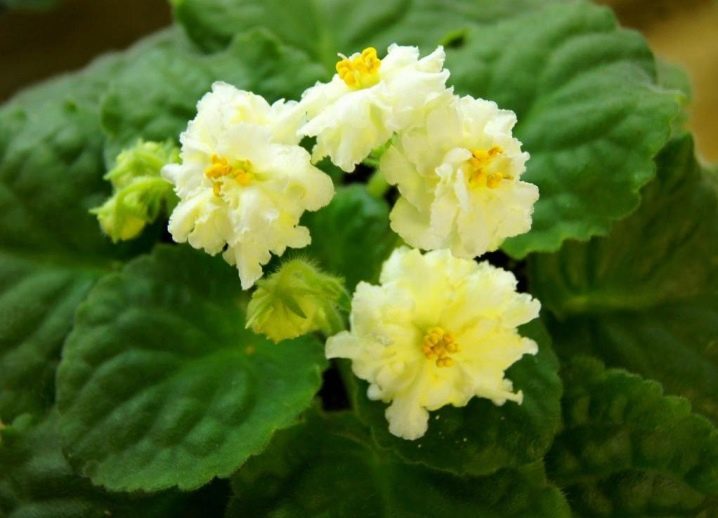
Warm Sunshine (LLG / P. Sorano)
The small, lush flowers are similar in shape to a lotus. They stand out picturesquely against the background of green foliage. Leaves with jagged edges. The petals are white, with yellow spots protruding on them. The middle of the flower is yellow, with each flowering the yellowness appears brighter.The buds open slowly. The flower stays fresh until it has fully blossomed, then begins to turn brown and loses its appearance.
Long-lasting flowering due to constantly appearing buds.
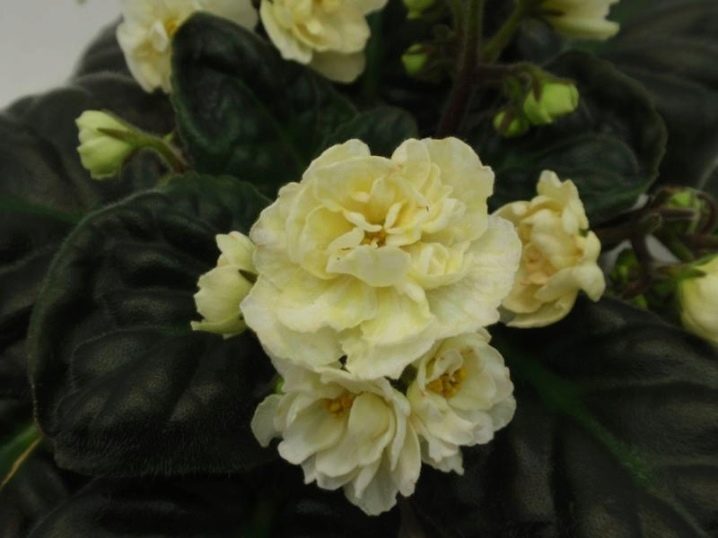
Golden autumn
It has large white flowers with golden fringes. Artfully curved, wavy petals with yellowish spots give them a somewhat fantastic look. By the middle of the flower, the color becomes almost yellow. The foliage is light green with wavy edges. It blooms for a long time, with an interval of 2-4 months.
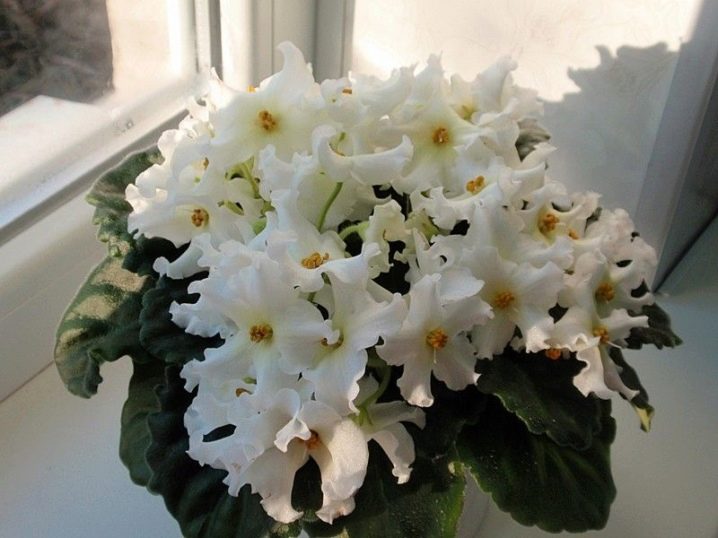
Lemon kisses
The flower is large enough and beautifully shaped, double with lemon-colored rays. Young rosettes are even, almost white. They turn yellow after several flowering. They have a drawback - they fade quickly. It is difficult to catch a massive bloom, as some have already faded while others have not yet blossomed.
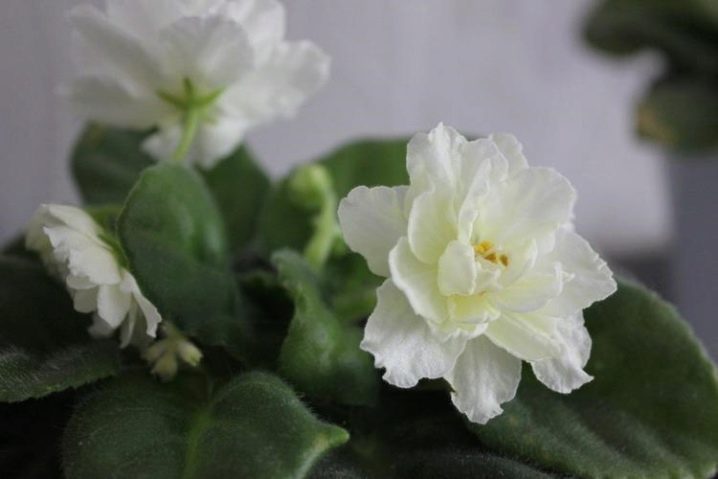
"Sunny girl"
The flowers are large, almost white with a pinkish fringe. Standard bright green and wavy rosette. Leaves taper towards the base.
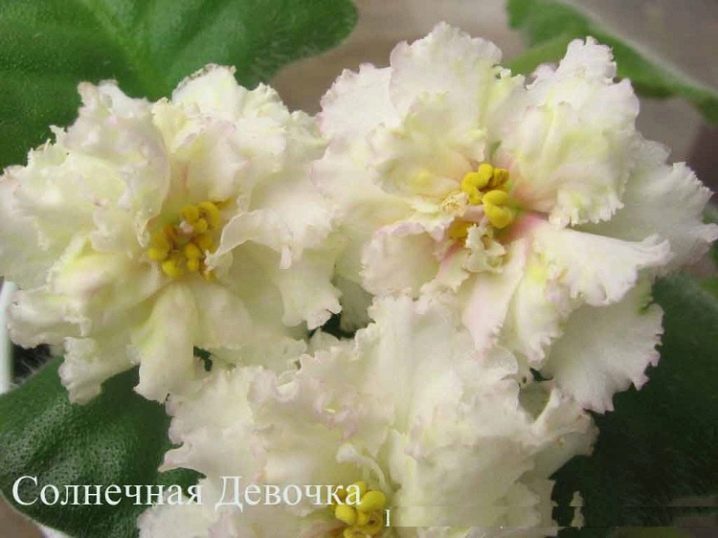
"Yellow Dragon"
Fluffy huge white flowers that look like a star with lemon-toned rays coming from the center of the flower. The strokes gradually turn into yellow spots, covering the entire flower. Not very bright wavy leaves. The yellow color starts to show more strongly from the second flowering. The size of the first flowers is 8-9 cm in diameter, the following are smaller. There are many stepsons, children grow up slowly. In insufficient light, the leaves of the rosette fold almost vertically. The variety needs constant rejuvenation.
In this species, the yellowness does not turn into a brown tint, like in most yellow-flowered ones.
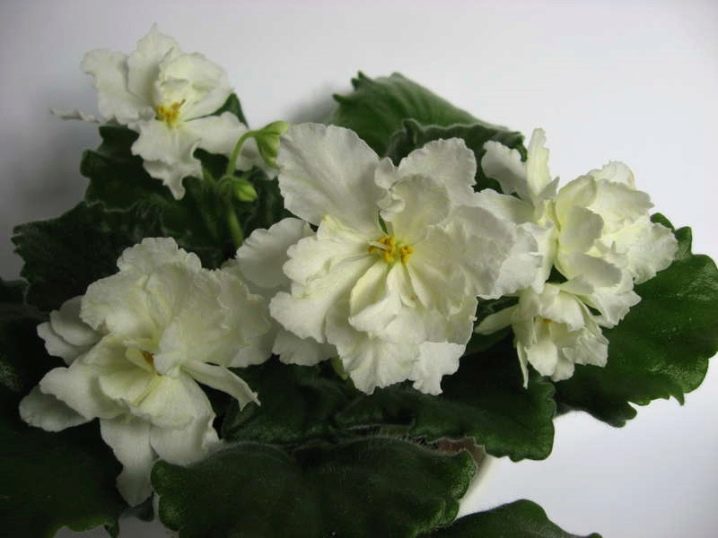
"Violet AB - Rose"
The view is mesmerizing with its beauty. Terry roses with white petals and a yellowish tint. Intermittent pinkish edging along the edges. The edging of the green leaves is serrated, a typical rosette.
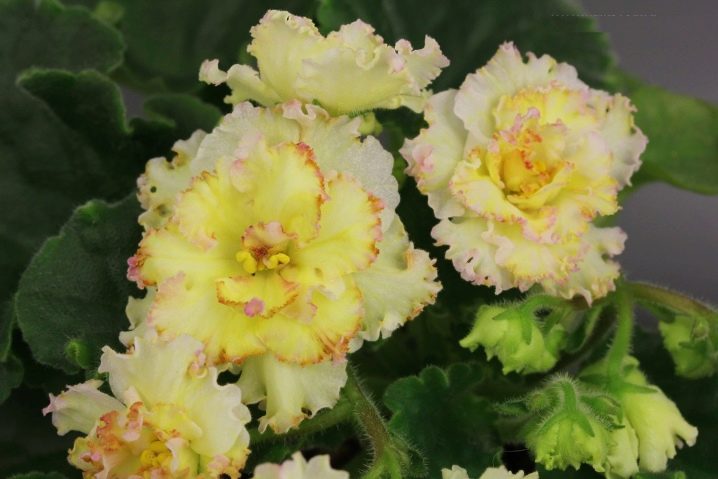
Alchemy bells
Miniature light yellow flowers shaped like bells with pinkish touches on them. Petals with light, sinuous edges. Some bells turn out to be open. There are many buds, blooms often, but flowering is moderate, since the bells quickly fade. The large number of buds makes flowering lasting up to two weeks. Grows quickly, begins to bloom early. After 2 flowering, it is necessary to transplant the plant into another pot, as it turns pale, stretches, and blue stripes may appear on the flowers.
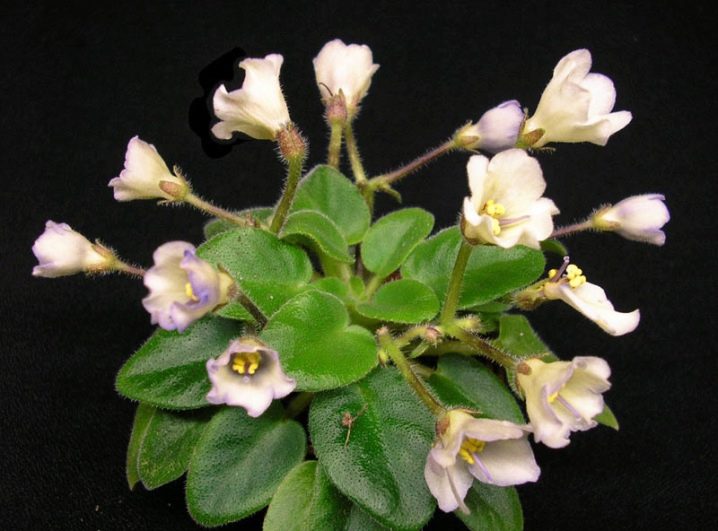
Yellow star
A miniature violet resembling yellowish bells with lilac touches. The leaves are heart-shaped. The lemon hue appears during flowering. The older the plant becomes, the brighter it becomes. The first uneven small flowers do not look very pretty. In the next blooms, they become larger and more attractive to the eyes. Flowers can bloom both simple and star-like.
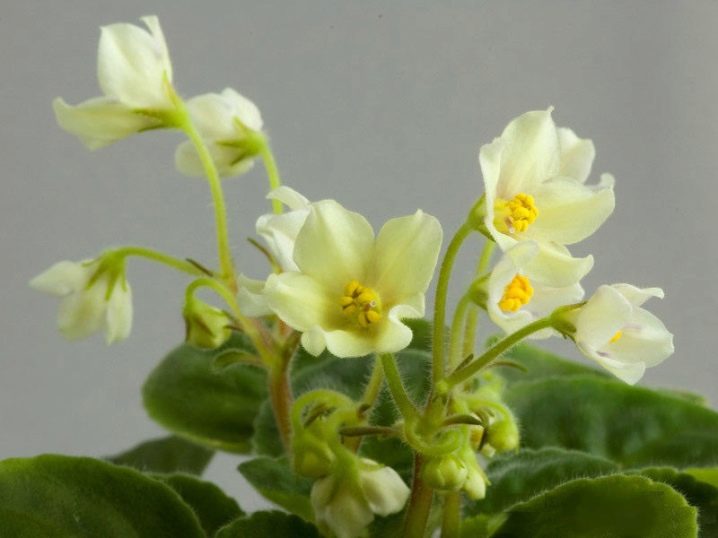
Growing and keeping
The best place for violets is on the window sills of windows that face the west or east side. For better illumination, they are periodically rotated. To keep the flowering constant, a dim artificial light is used. Sharp temperature changes are contraindicated for these sensitive colors. With the onset of cold weather, so that the violets do not weaken, they are removed from the windowsills.
Yellow Saintpaulias are very delicate flowers. They must be watered carefully and always with water at room temperature. Do not allow the soil to dry out and its excessive moisture. This will harm the plant.
Watering is carried out along the edge of the flowerpot so that water does not fall on the petals. In winter, watering can be limited.
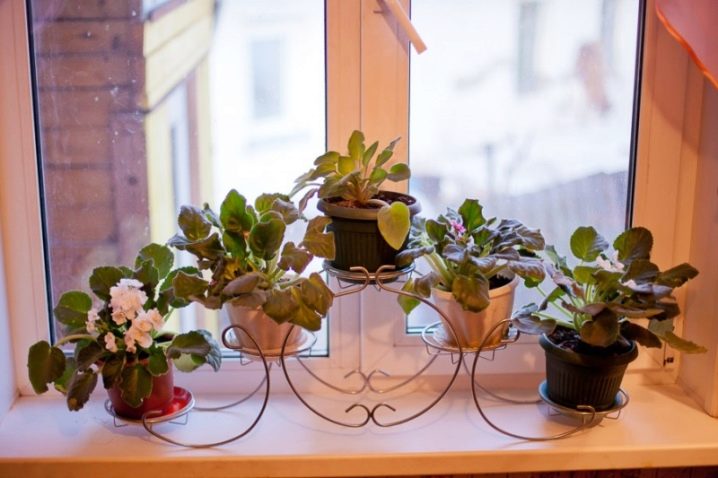
It is enough to feed Saintpaulia once every 2 weeks during flowering. The plant is fertilized simultaneously with watering. Top dressing is applied mineral with a predominance of phosphorus. Spraying is not recommended. To create sufficient moisture for the flower, the pot is placed on a moistened saucer with fillers.
There are two ways to propagate violets at home:
- leafy cuttings;
- daughter sockets.
Cuttings are the simplest and most common method. A good and strong leaf with a cutting length of up to 3 cm is in the water until the roots form. Then it is planted in the soil at a shallow depth (up to 2 cm) and watered with warm water. Frequent transplants are not required (once a year). The soil base for growing violets is purchased from specialized stores.
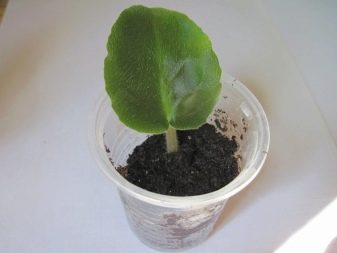
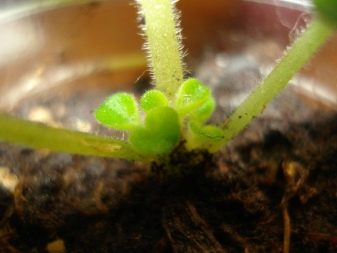
Protection and prevention
When there is not enough light, yellow spots may appear on the top of the leaf. This is a sign of rust. In the hot summer period, bacteriosis is possible. In this case, brown spots appear on the stem and leaves. They become soft and darken. With powdery mildew, a white bloom appears on the petioles and leaves. With false dew, plaque appears on the lower leaf part.
If such signs appear, all damaged parts of the plant must be removed. The soil and the rest of it are treated with fungicides. For prevention, it is necessary to monitor the balance of fertilizers in the soil. Treat the soil with fungicides before planting. If you decide to start growing violets, then it is better to refuse large and beautiful show varieties, as some difficulties may arise during cultivation. It is best to start with small, miniature violets.
They are original, unpretentious and extraordinarily beautiful.
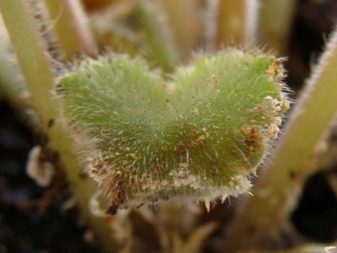
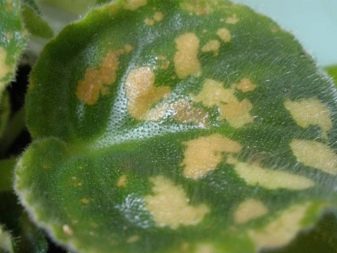
For expert advice on caring for violets, see the video below.































The comment was sent successfully.